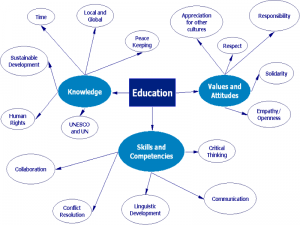Last week (it’s already old news), we had the 1st WebCurriculo conference, which took place at PUC SP and was blogged and streamed live. I submitted a paper about my 10-year school experience using social tools, networks and interaction in the classroom to complement, extend and transform the curriculum. 
This was a challenge I set out for myself . It was the first time I sent my work to a Brazilian university . Ironically, what I have been doing at school was first shown and recognized abroad instead of inside my own organization (school) – which does not even know about this paper…so closed it is inside its own processes. The web and networking was an outward movement. I am now coming back and trying to find my place in the local educational environment. Not easy. Second challenge (minor and fun), believe it or not – I had never made an academic poster before. Incredible how fussy some people can be over standard, form and norm and how anxious you can get for fear of not being accepted if you do not “conform”.
I had already written about my experience in Portuguese for Praxis (a 30-page ) but needed to condense it twice – first for the submission paper: “Ferramentas Sociais, Redes e Interação” (webcurriculo – (thanks Neli for lending me a hand) and then later for the poster. In spite of my lack of experience in this field, I managed to make one after after a quick search on the web. It was a good exercise in synthesis and visual distribution/impact. Once it was printed, and hung, I immediately realized I should have done it totally different. This how one learns – set yourself a challenge, go for it, do your best, verify results, adjust, lather, rinse and repeat…or is it the other way round? 🙂
As I listened to the various presentations, I compared the reactions to mine and was reminded of the steps I have made these years towards trying to find a balance in my courses. At the language institute I first worked, I was just an instructor, training people to develop their communication and linguistic skills in a foreign language, not really engaged in any reality but the service I was delivering. However, when I moved to the secondary school, although the job profile was the same as before, I increasingly became an educator and as such, gradually much more aware of the social engineering we are subjected to through the uniform, over-structured, inflexible and centralized programs imposed . While trying to implement these new technologies in the classroom , I was constantly confronted with the unresponsive wall of institutional bureaucracy.
While writing this post, I dug up this drawing made by the Time Project team and compared it to a sketch late Lee Baber asked me to check some time ago. There is so much talk about different curricula. Education surely involves some amount and quantity – skills and competencies – but I’d say it is mostly about quality – values and a better understanding of action and knowledge in time – Chronos and Kairos. How do you achieve it on the Web?
 1. Core Subjects and 21st Century Themes
1. Core Subjects and 21st Century Themes
2. Learning and Innovation Skills
* Creativity and Innovation Skills
* Critical Thinking and Problem Solving Skills
* Communication and Collaboration Skills
3. Information, Media and Technology Skills
* Information Literacy
* Media Literacy
* ICT Literacy
4. Life and Career Skills
* Flexibility & Adaptability
* Initiative & Self-Direction
* Social & Cross-Cultural Skills
* Productivity & Accountability
* Leadership & Responsibility
and four 21ST CENTURY SUPPORT SYSTEMS:
1. Standards and Assessment of 21st Century Skills
2. Curriculum and Instruction
3. Professional Development
4. Learning Environments


4 Responses to 1st Web Curriculo